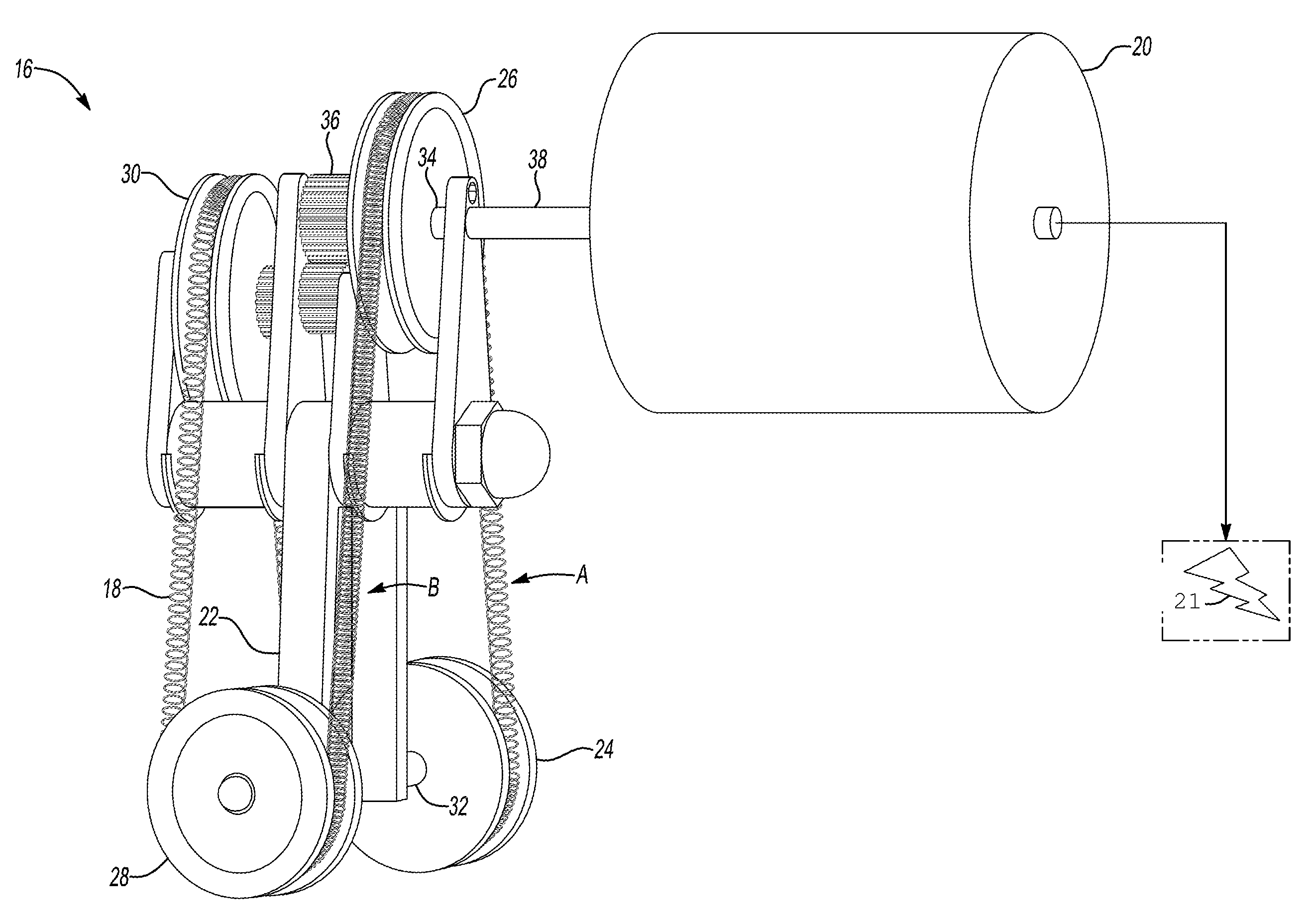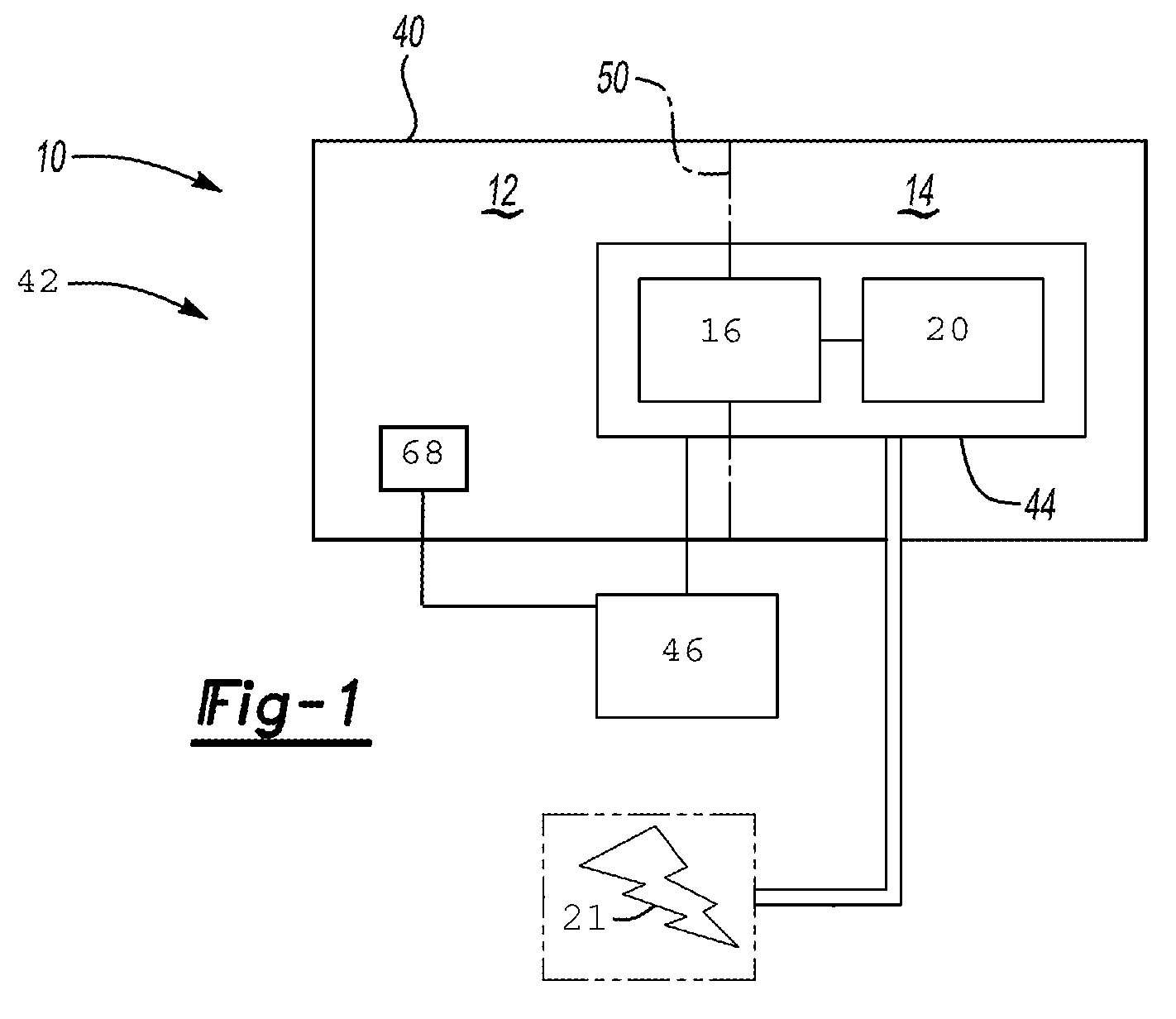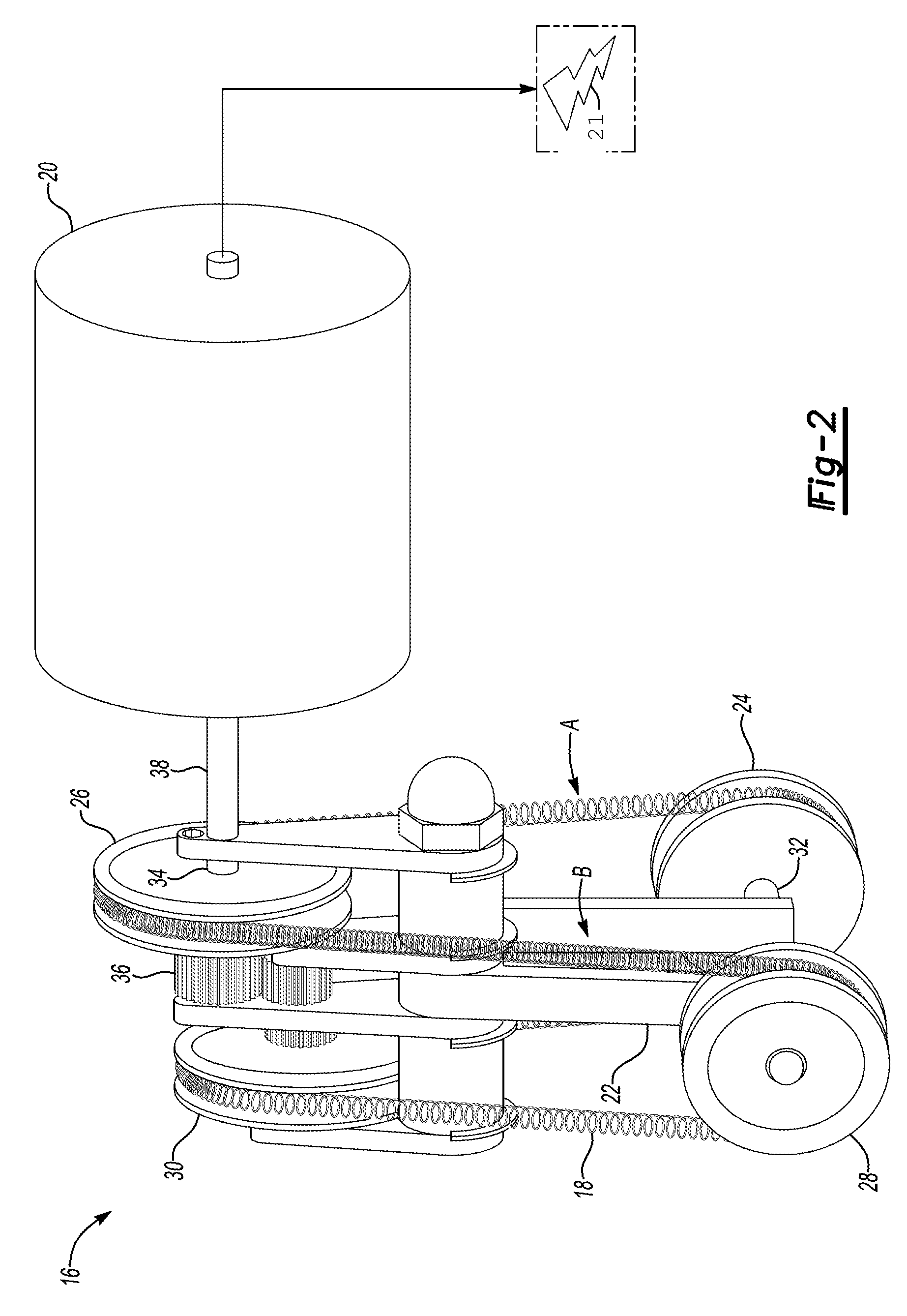Method of controlling a thermal energy harvesting system
a technology of thermal energy harvesting and energy harvesting system, which is applied in the field of vehicle, can solve the problems of large amount of engine heat and excess thermal energy typically dissipated into the atmosphere, and achieve the effect of maximizing the operating efficiency of the energy harvesting system
- Summary
- Abstract
- Description
- Claims
- Application Information
AI Technical Summary
Benefits of technology
Problems solved by technology
Method used
Image
Examples
Embodiment Construction
[0012]Referring to the Figures, wherein like reference numerals refer to like elements, a vehicle is shown generally at 10 in FIG. 1. Referring to FIG. 1, the vehicle 10 includes an energy harvesting system 42. The energy harvesting system 42 utilizes the temperature difference between a first fluid region 12 and a second fluid region 14 to generate mechanical or electrical energy, and therefore may be useful for automotive applications. However, it is to be appreciated that the energy harvesting system 42 may also be useful for non-automotive applications such as, but not limited to, household and industrial heating applications and geothermal heat sources.
[0013]The vehicle 10 defines a compartment 40 which may house power and drive sources for the vehicle 10, such as an engine and transmission (not shown). The compartment 40 may or may not be enclosed from the surrounding environment, although it is likely separated from a passenger compartment (not shown). Examples of the areas w...
PUM
 Login to View More
Login to View More Abstract
Description
Claims
Application Information
 Login to View More
Login to View More - R&D
- Intellectual Property
- Life Sciences
- Materials
- Tech Scout
- Unparalleled Data Quality
- Higher Quality Content
- 60% Fewer Hallucinations
Browse by: Latest US Patents, China's latest patents, Technical Efficacy Thesaurus, Application Domain, Technology Topic, Popular Technical Reports.
© 2025 PatSnap. All rights reserved.Legal|Privacy policy|Modern Slavery Act Transparency Statement|Sitemap|About US| Contact US: help@patsnap.com



